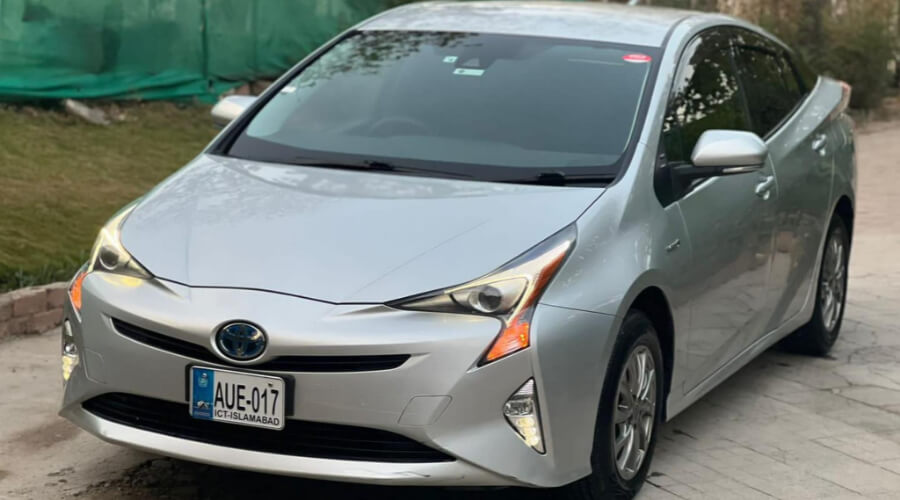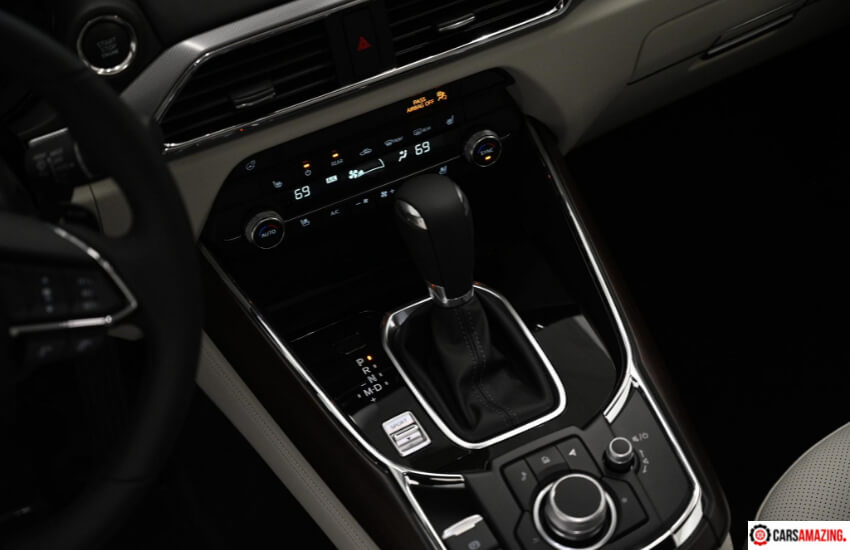Last Updated on February 12, 2023 by Leepu Da Maxim
The shifter on a Prius offers drivers different features and options for maneuvering the car in the right way. B-mode stands for engine braking and comes in handy when driving on hilly roads to control the vehicle’s speed without straining the brakes.
Key Takeaways
- Toyota uses a continuously variable transmission (CVT) instead of a conventional automatic transmission and the B on the brake stands for “Brake Mode”
- When you engage B-mode on your Prius, the car shifts to a lower gear and increases drag on the engine to slow the vehicle down
- The B-mode on the Prius shifter helps prevent overexertion on your brakes and increases the breaks life
- When the shifter is in the “B”, it slows down the vehicle without relying on the traditional mechanical brakes
How To Use The B Gear In A Prius
Engaging B mode is easy as ABC, and it will help you protect the car’s regenerative braking system and brake pads. When driving on a steep hill, slow down to an appropriate speed by applying brakes. It would be best to slow down until you are comfortable with the speed and ensure it is within the speed limit. Once you are pleased with the speed, move the shifter knob to B, you don’t need to press the brake to do this. You will have successfully activated B mode, and the engine will rave loudly due to the increased spinning.
How Does B-mode Work?
Most drivers are curious to find out how engine braking works when they find out what B-mode
is. I wanted to know what happens when shifting Prius to B, so let’s find out. In the course of everyday driving, you will not need to use B mode. It only comes in handy when descending steep hills or when the driver operates brake pedals; the brake pads may overheat or fail.
For other vehicles, drivers handle steep hills by slowing down to an ideal speed and shifting to a lower gear. This method causes the engine to spin faster than necessary, thus wasting energy through vacuum losses. However, it is effective in ensuring the vehicle moves at a safe speed without the brake pads overheating.
In a Prius, the driver handles steep hills by shifting the mode selector to B. choosing this mode makes the Prius emulate engine braking. Depending on the vehicle’s battery state of charge and speed, the Prius will use either high-RPM zero-fuel-flow engine braking or regenerative braking.
When Should You Use B Mode?
You can use B mode in several instances to get the most out of your Prius; the most common is when you want to achieve engine braking, but there are other unique and advanced applications of the B mode.
1. The first unique application is when you are driving in stop-and-go traffic where the engine needs to shut down then keep starting after every short movement. If your engine annoys you by turning on and off, you can switch to B mode during a forward direction. When you engage B mode in such instances, the engine runs as it charges the battery when you stop.
2. The second unique instance when you can use B mode is when you are driving in the descents of a bumpy road where you wouldn’t use engine braking. Using B mode in these scenarios helps your battery recover as much energy as possible in terms of battery charge.
The car’s control system will disengage the regenerative braking system in such an instance. When the system is disengaged, you will not recover the energy of the descent as a battery charge. There’s no need to do anything other than braking a little harder since you are not hurting the car. Take advantage of the B mode to charge your battery if driving a Prius.
The only side effect of using B mode in such instances is that when you disengage regenerative braking, your battery charging will increase at lower speeds. You will need to release the brake a little for regenerative braking to reset or switch to D-mode when you get to a smooth section of the road to get the most regenerated charge.
3. The other instance where you can use B mode isn’t so unique: use it in the same circumstances where you can change to a lower gear when slowing down a conventional car. For example, when driving down a steep and long hill. When you engage B mode, your Prius will activate engine braking to spin the engine to hold the vehicle back.
When To Avoid Using B Mode When Driving A Prius
Since there’s no advantage of using B-mode when not required, it is best to avoid using it during regular driving. Using this mode in normal driving doesn’t recharge your hybrid battery, throwing away energy unnecessarily. For everyday driving, it is advisable to use regular brakes because they will engage regenerative brakes
Can You Shift From D To B When Driving?
Yes, you can only shift to B when the gear is at D since you can’t go directly from P(park) to B. Your car is equipped with advanced features that cannot allow you to shift gears in an unsafe way or might damage the vehicle. That is why when you change from drive to reverse while in motion, the gear puts you into neutral because this gear change can be unsafe and may damage the transmission.
Tips And Tricks For Driving Your Toyota Prius Effectively

To get the most out of your vehicle and drive efficiently, you will need to know how different components work. Reading the manual or website can help you learn a few valuable tips, but we forget to do that most times. Below are some tips and tricks you can use to enhance the driving experience on your Toyota Prius.
1. Always choose the route with the fewest stops and will allow you a speed of 40-45mph to get the best mileage
2. Use cruise control to keep your car at a constant speed and save fuel
3. If you approach a stop, such as at traffic lights when driving in B mode, shift to D to shut off the engine immediately
4. Use EV mode when driving below 35mph to use the battery and save up to 5mpg of fuel
5. When driving on a long uphill followed by a long downhill, start with the transmission in D with a speed of up to 5mph, then switch to B mode for decline and maintain the speed below 50 mph. This increases overall efficiency by charging the battery to full charge and using this battery capacity to assist the motor in comprehensive braking.
6. Ensure your tires are well inflated since under-inflating increases fuel expenditure by up to 6%
7. Check your battery regularly to ensure it is working in optimal condition; if you notice any symptom of a failing battery, get it checked immediately.
Wrapping Up
Hybrid vehicles help drivers achieve excellent fuel economy while enhancing the driving experience. Knowing how different features of your Toyota Prius work will help you get the most from your car. For example, driving with the shifter at B will come in handy on steep hills to help you achieve engine braking and save your brake pads from wearing out. You can also use this mode to help charge your battery and gain excellent fuel economy. You won’t need to use B mode for regular driving so take advantage of the unique situations we described to get the most of this mode.

Hi, I’m Leepu Da Maxim , a dedicated car enthusiast with over 10 years of experience in this field, and I’m thrilled to share my passion and expertise with fellow car enthusiasts like you. My journey began in my hometown West Jordan, Utah, where my fascination with the mechanics and design of cars sparked at a young age. Over the years, this passion has evolved into a commitment to providing accurate, insightful, and engaging information about all things automotive through CarsAmazing .

